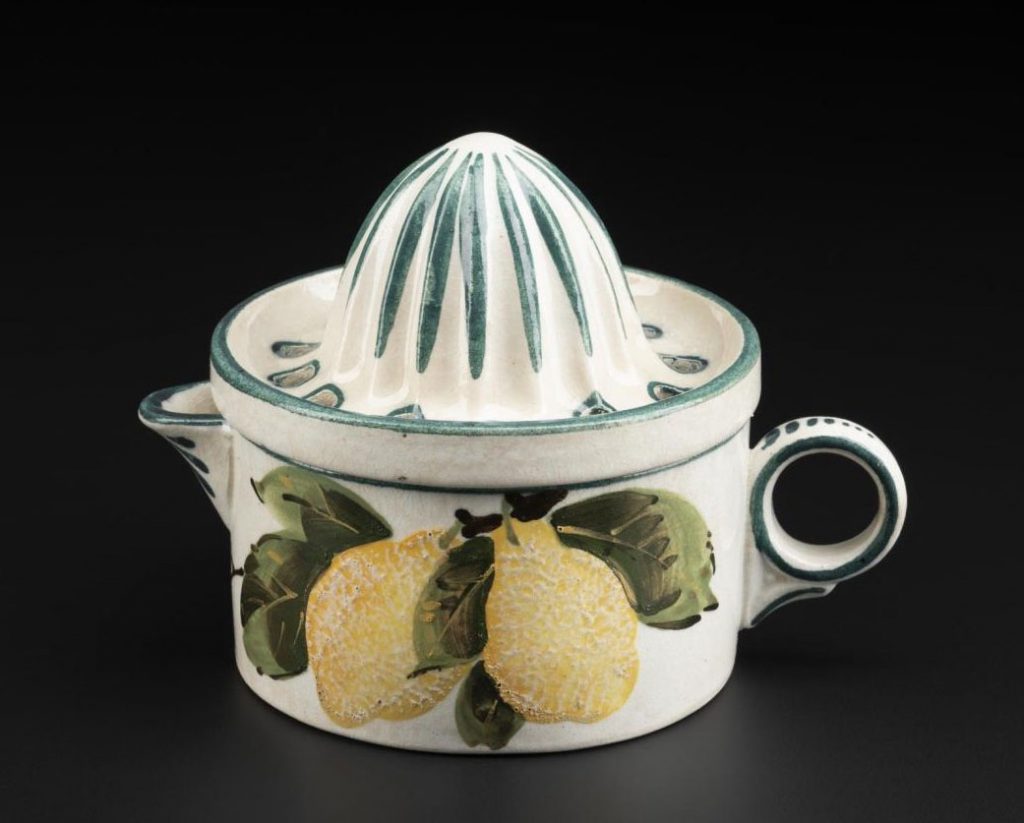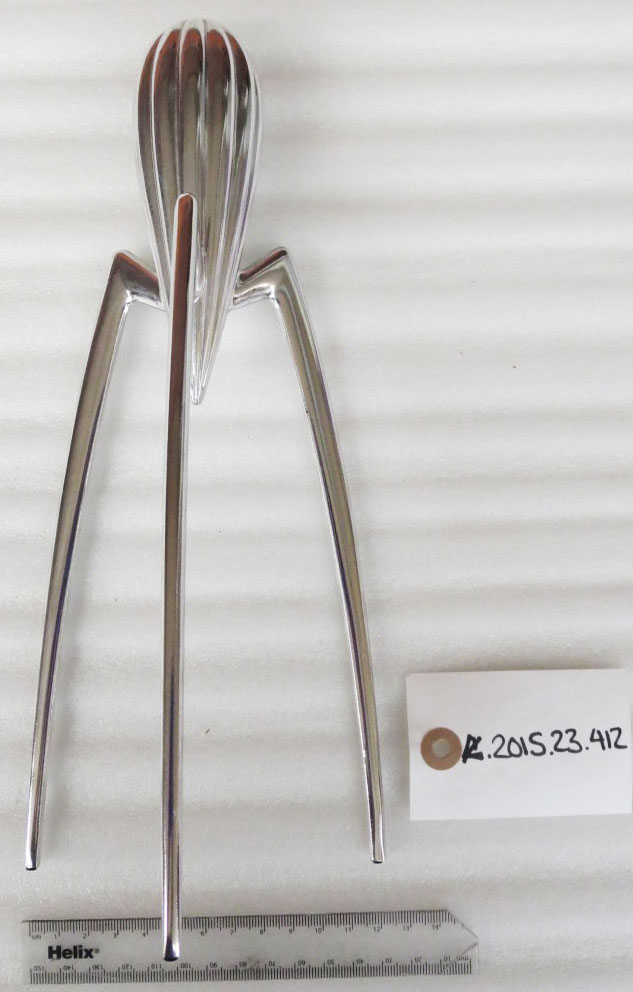Have you ever thought of a lemon squeezer as controversial? Prior to my student placement at National Museums Scotland, this was not a word I would have ever applied to a lemon squeezer. Functional? Certainly. Sticky? Absolutely. Controversial? How on earth could a lemon squeezer be controversial?

In my work with the Modernist Collection at the Museum, I was to come across an object that I would later discover to be the most controversial lemon squeezer in history—at least, that is how designer Philippe Starck describes it. I encountered said lemon squeezer on my very first day working with the collection and its design stuck with me, and I could not stop thinking about it.
This lemon squeezer was the Juicy Salif Lemon-Squeezer designed by Philippe Starck for Alessi in 1990. I had never in my life laid eyes on a lemon squeezer quite like this one. My first thought was that it looked like the viruses I had studied back in school, or perhaps an alien spaceship a la War of the Worlds. I certainly did not think it looked like a lemon-squeezer at all. This object was mind-boggling to me, and I thought it must be one-of-a-kind.

However, I started seeing this lemon squeezer everywhere. On the cover of books, in other museum collections, and even in my friend’s mother’s kitchen. Upon further inspection, I learnt that the Juicy Salif lemon squeezer is, in fact, one of Philippe Starck’s most influential designs and is still sold to this day. They are not too hard to find either. There is the one in the National Museum’s collection, but there is also one in the collection of the Victoria & Albert Museum, London, as well as The Museum of Modern Art, New York and they’re still on sale in John Lewis.
The Juicy Salif squeezer was modelled after squid, as Starck came up for the idea while eating a plate of calamari garnished with lemon. He doodled various designs on his napkin and sent the final design off to Alessi, who immediately thought it was a work of art. The design was meant to be more practical, as the citrus fruit could be squeezed directly into a glass without having to go first through a sieve and into a dish.
So what makes this design so controversial? Well, it turns out that the design is really not all that practical, despite Starck’s original intent. Many people claim that this squeezer made a mess of the counter top. The design simply is not conducive to juicing lemons. Many people buy the Juicy Salif just for the sake of its design, with no intention of ever using it to squeeze any citrus. Perhaps that’s the point. In a publication released by Alessi the 25th anniversary of the design, Philippe Starck states that the original intent of the product was not to actually be functional but to spark conversation.
And it certainly achieves that purpose. It is a popular culture icon, and still captures the imagination of the masses.
I guess the lesson from this is: when life gives you lemons, design a controversial conversation-starting lemon squeezer.